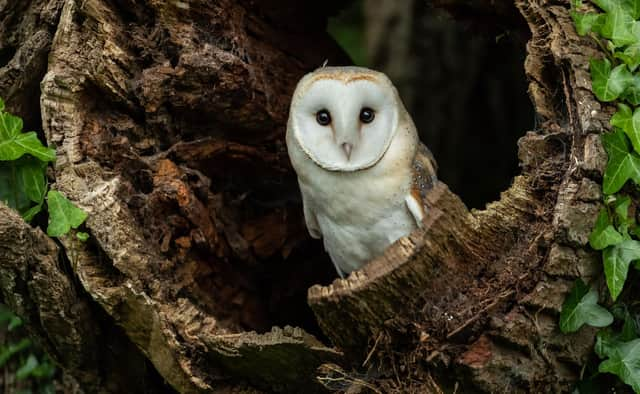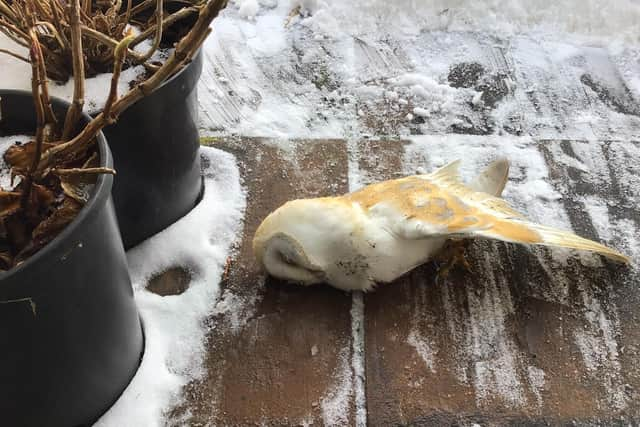Fears for Scottish barn owls as deaths mount up after snows


Fears have been raised over the impact of heavy snow and freezing temperatures on barn owls after a worrying number of the birds were found dead in an area of Perthshire known as a stronghold for the species.
Barn owls can be easily recognised by their pale undersides and white heart-shaped faces.
Advertisement
Hide AdAdvertisement
Hide AdThey are widespread across the UK, except parts of the Scottish Highlands.


Populations have suffered declines over the past half century, thought to be down to habitat-loss due to intensified agricultural practices and the effects of climate change.
This trend seems to have been halted in many areas, with numbers showing an upturn.
Scotland is currently home to an estimated 1,000 breeding pairs.
Aeas around Glen Quaich, Sma’ Glen and Glen Cuchil in Perthshire have seen numbers rise in recent years, with local farmers, shepherds and gamekeepers helping support the species by providing extra feeding, shelter and other measures.
But they are now concerned for the owls, which are vulnerable to extreme wintry conditions, after finding several bodies of birds thought to have starved to death.
The species almost disappeared from these same Perthshire glens following heavy snows of 2010 and it’s feared this may happen again.
Alice Bugden, coordinator for the Tayside and Central Scotland Moorland Group, said: “I have received multiple pictures of dead barn owls from local land managers.
Advertisement
Hide AdAdvertisement
Hide Ad“The birds have sadly perished in this harsh winter, unable to source enough food.
“We will not understand the devastating impact until the coming breeding season.”
Two of the fatalities had been fitted with rings, which enabled the group to trace them back to the local ornithologist who tagged them.
Both birds were last year’s fledgelings and had only ranged a few miles.
Gamekeeper Ben Stevens added: “I have a barn owl living in my barn and I know many shepherds and keepers in the area have similar residents in their barns.
“Sadly, I haven’t seen ours return in the last week, so I fear the weather has taken its toll on the poor bird.”
It took nearly three years for numbers to rise again after the snows of 2010.
But it’s hoped, given the relative health of the local population prior to the recent freezing weather, there will be sufficient survivors to restore the local breeding population.
Advertisement
Hide AdAdvertisement
Hide AdShepherd Ben Mackinnon said: “We have always had barn owls in our barns.
“During those tough snowy weeks I noticed a barn owl taking residence in our sheep shed, with the sheep in it.
“Clearly it was using it to predate on mice in the straw bedding because there was no food elsewhere that they could get at.”
Barn owls are avid and stealthy hunters, silently scouring open grassland for small mammals such as voles, mice, shrews and rats.
They are usually monogamous, reuniting with the same mate each breeding season until one of them dies.
Barn owls are at the most northerly extent of their range in Scotland, and – unlike other owls – do not have leg feathers, making them susceptible to weather extremes.
The full extent of the impacts of the recent cold spell will be fully understood when licensed ornithologists return to track the birds this spring.
A message from the Editor:
Thank you for reading this article. We’re more reliant on your support than ever as the shift in consumer habits brought about by coronavirus impacts our advertisers.
If you haven’t already, please consider supporting our trusted, fact-checked journalism by taking out a digital subscription. Visit https://www.scotsman.com/subscriptions now to sign up.
Comments
Want to join the conversation? Please or to comment on this article.